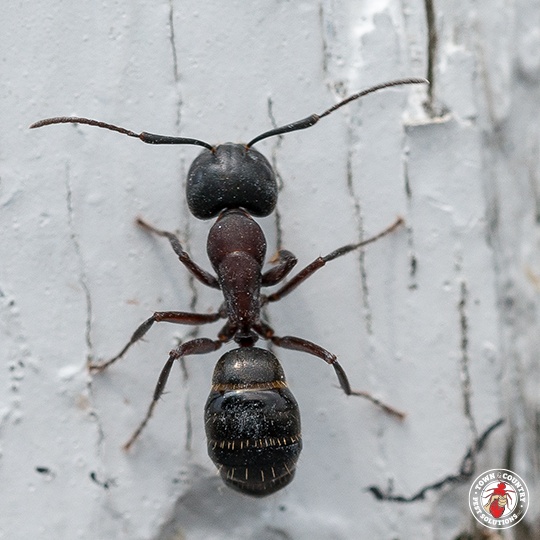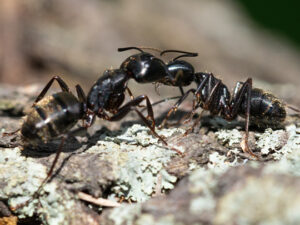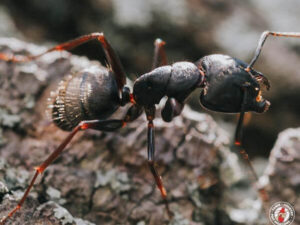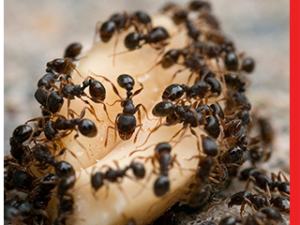
For many New York State homeowners, the presence of ants is a year-round struggle. Whether they’re sneaking into your pantry for a sugary snack or building ant hills that mar your manicured lawn, these tiny pests can quickly become a major annoyance. With the sheer variety of ant species in the state, it’s important to be able to identify and understand how to manage these pests effectively.
In this comprehensive guide, we’re exploring the most common ant species you’re likely to encounter in the Empire State and offering insight into how to handle infestations in and around your home. From the notorious nuisance of odorous house ants to the agonizing bite of the northern black ant, understanding your adversary is the first step towards living in peaceful cohabitation.
Understanding Ant Behavior and Habitats
Before we discuss specific ant species, it’s crucial to understand some general aspects of ant behavior and habitat preferences. Ants are social insects that live in colonies, often located in the ground, in wood, or in the structures of buildings. Each colony is usually composed of various castes, such as workers, queens, and sometimes, soldiers.
Ants are attracted to different environments based on their nutrition and survival needs. While most ant species are omnivorous, their diet can range from a focus on proteins and oils to a preference for sugars. Some common environments that attract ants include:
- Moisture: Many ant species will seek out damp areas to build their colonies in order to maintain a constant level of humidity necessary for survival.
- Food Sources: The availability of food, particularly sweet or fatty substances, will draw ants into your home.
- Accessible Shelters: Cracks in walls, gaps in flooring, and other crevices provide excellent nesting spots that are warm and provide protection.
Understanding these factors can help with ant-proofing your home and making it less attractive to potential ant invaders.
New York’s Top Ant Offenders
Odorous House Ants (Tapinoma sessile)
Notorious for the rotten coconut-like smell they emit when crushed, odorous house ants are, ironically, more obnoxious than odorous. These small, brown ants are some of the most common invaders of homes in New York. They are typically found nesting in wall voids, behind insulation, and under floors. Consistently trailing near moisture, they are often seen in bathrooms and kitchens, especially around water sources. Control methods for odorous house ants vary from baiting to sealing entry points into your home.
Carpenter Ants (Camponotus spp.)
Carpenter ants are significantly larger than odorous house ants, with some species exceeding half an inch in length. They are a menace to homeowners not because of what they consume, but for what they destroy. Carpenter ants don’t eat wood, but they excavate galleries within it to build their nests. This can lead to weakening of structures in your home. Identifying and eliminating carpenter ant colonies often requires professional assistance due to the colony’s size and the potential extent of the damage they can cause.
Pavement Ants (Tetramorium caespitum)
These dark-brown to black ants are usually about tenth to a quarter-inch long and often build their nests under porch slabs, in the cracks of driveways, and beneath building foundations. They’re named “pavement ants” for their most typical nesting locations and can be a nuisance both indoors and outdoors. They are known to feed on a wide range of items from grease and sweets to live and dead insects. Sealing cracks in foundations and other potential entry points is key to controlling pavement ants.
Pharaoh Ants (Monomorium pharaonis)
Tiny yellow or light brown ants, the size of a pinhead, pharaoh ants are a very common indoor pest and have multiple queens which means they can grow in numbers very quickly. These ants do not venture far from their nest and prefer warm, humid areas. They are a severe concern for hospitals and other institutions where control may necessitate a multi-faceted approach that includes sanitation, baiting, and the removal of competing food sources.
Little Black Ants (Monomorium minimum)
Little black ants are one of the most common and widespread ant species. They prefer to nest beneath rocks and logs but often invade homes in search of sweet or oily food sources. Their small size allows them to enter through the tiniest openings and makes them excellent scavengers.
Ant Management 101: Prevention and Control Tactics
Home Sanitation
The first and most crucial step in ant control is sanitation. This involves keeping your home clean, especially the kitchen and other areas where food is present. Properly storing food in airtight containers, promptly cleaning up spills, and eliminating standing water are essential practices to keep pests at bay.
Sealing Entry Points
To prevent ants from entering your home, you must seal off their possible entry points. Inspect the exterior of your home for cracks and crevices, paying attention to areas where utility pipes enter. Use caulk to seal any openings and consider installing door sweeps to close off gaps at the bottom of doors.
Eliminating Nesting Sites
Reducing the number of suitable nesting sites around your property can deter ants from taking up residence. Keep firewood, building materials, and debris away from the home’s foundation. Trim back vegetation and brush that can provide a bridge for ants to access your home.
Baiting
Baits can be an effective way to control ant populations, but it is essential to select the right kind of bait, as not all ants are attracted to the same substances. Place baits near ant activity and always follow the manufacturer’s instructions.
Chemical Control
If the ant problem persists, employing pesticides may be necessary. It’s crucial to choose a product designed for ant control and to use it safely and effectively. Consider products labelled for use in your specific area, and if in doubt, always seek professional pest control help!
Dealing with ants in New York State can be a year-round battle, but with a good understanding of the common species and the right prevention and control strategies, you can keep them at bay. Remember, the key to effective ant management is regular inspection, early detection, and a proactive approach to keeping your home and property uninviting to these unwanted guests.
If you find yourself overwhelmed by ant infestations or need further assistance, it’s always wise to consult a professional pest control service. They can identify the species, help you understand factors contributing to infestations, and recommend the most effective treatment methods. With vigilance and a proactive mindset, you can enjoy a home that is free from the stress of ant invasions.












